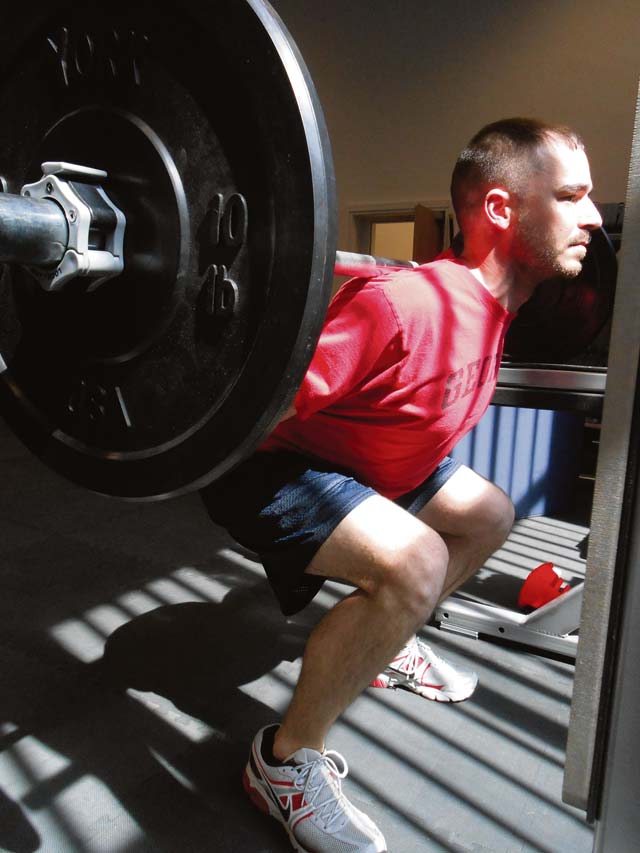National Physical Fitness, Sports Month
Story and photo by Cesar Alvarez
Ramstein Health and Wellness Center

In honor of National Physical Fitness and Sports Month, the Ramstein Health and Wellness Center would like to inform you about a basic compound full body exercise that is considered vital in developing core strength, leg strength and upper body strength, and helps to improve all aspects of the Air Force physical fitness training; the squat.
The squat begins from a standing position, knees and hips fully extended. The lifter then squats down, flexing the hip, knee and ankle joints. When the desired depth is achieved, the lifter reverses direction and returns to the standing position.
“It is a fantastic exercise for increasing strength in the legs and is considered by most strength and fitness professionals to be one of the best exercises for improving quality of life because of its ability to recruit multiple muscle groups in a single maneuver,” said Cesar Alvareaz, HAWC exercise physiologist. “It closely relates to everyday tasks (such as lifting packages and picking up children), as well as having an indirect correlation to countless other chores or hobbies. Squatting under resistance has been shown to improve running mechanics (therefore improving the 1.5 mile run) simply by improving the triple extension (coordinated extension of the hip, knee and ankle joints) force production.”
Some of the major limitations of the squat are disordered movement patterns associated with weak glutes, hamstrings and lower back muscles along with excessive valgus/varus (knock-kneed/bowlegged) knee movement patterns. Documented injuries from squatting include muscle and ligamentous sprains, ruptured intervertebral discs, spondylolysis and spondylolisthesis. When performed properly, squat related injuries are uncommon. To ensure you perform a good rep, imagine a box or stool is behind you for every rep until you get the form right. Push your hips back to initiate the movement and keep your weight on your heels. A common mistake is performing squats with the weight on the balls of the feet; this decreases the knee angle at the bottom of the range of motion and increases sheer force of the joint structure. Another common mistake is to bend at the waist instead of pushing one’s hips back thereby increasing the risk of lower back pain.
For programming purposes, the squat should always be performed early in a workout to avoid fatigue-related form compromises. With respect to days of the week, heavy squats are usually completed twice per week in an aggressive strength-building program. Squatting more frequently than that will lead to overtraining if sufficient loads are used. Be sure to respect the recovery process and provide sufficient time for recovery. Diet and sleep matter. Remember; you don’t get stronger from lifting weights, you get stronger from recovering from lifting weights.
If you would like more information about proper lifting techniques or beginning a basic weight lifting program, email the HAWC at 86amds.hawc@us.af.mil or call 480-HAWC (4292). The fitness center staff also has certified fitness specialists who can assist.


